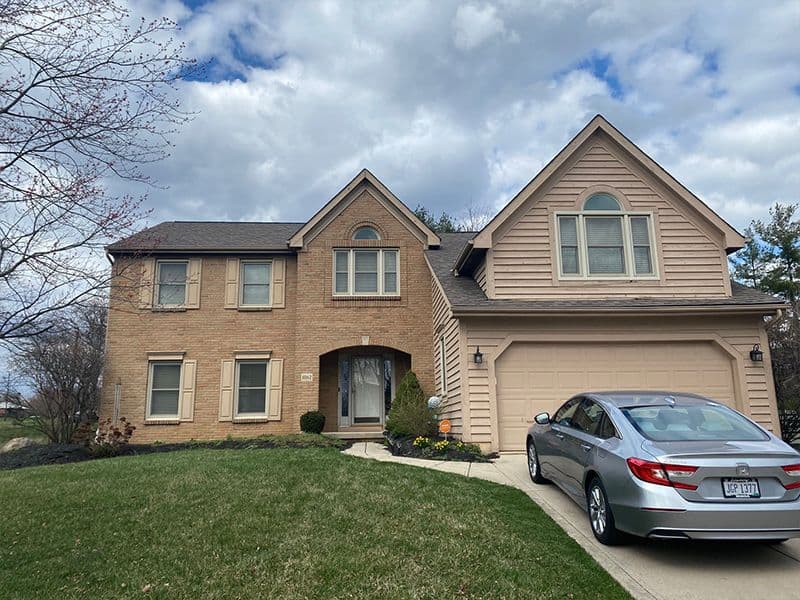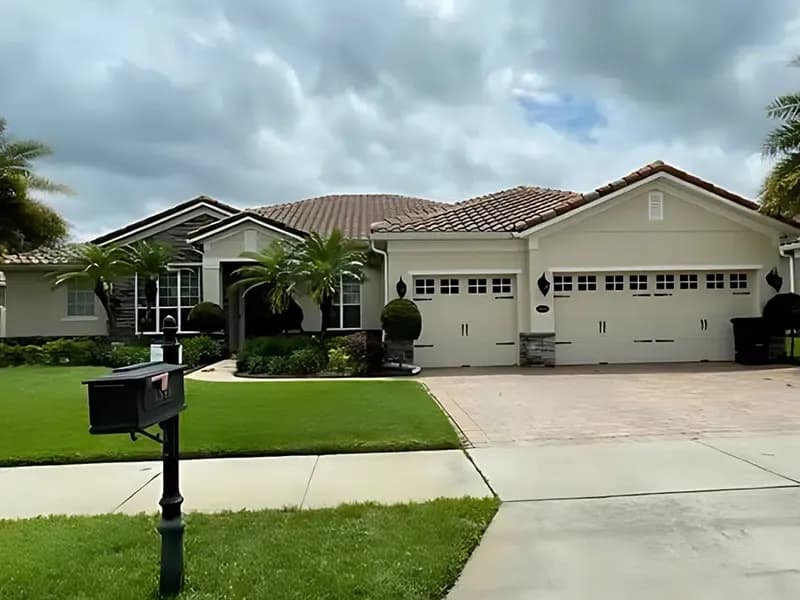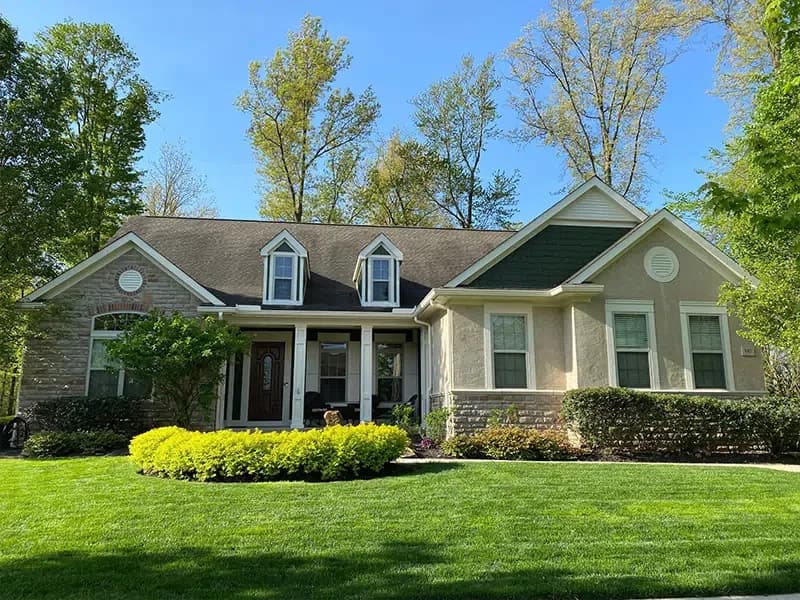Painting Resources for the Greater Orlando, FL Region
Oil-Based vs. Latex Paint: Which Is Better For Your Exterior?

Schedule Your Quote Today!
25% Off
Ends 10/31
By submitting this form, you consent to receive SMS messages and/or emails from our company. To unsubscribe, follow the instructions provided in our communications. Msg & data rates may apply for SMS. Your information is secure and will not be sold to third parties.
If you’re planning to repaint your home’s exterior, one of the biggest decisions you’ll make isn’t the color—it’s the type of paint. Should you go with time-tested oil-based paint or modern latex paint?
This decision can directly affect your home’s curb appeal, paint longevity, resistance to weather damage, and how often you’ll need to repaint in the future.
If you’re asking these questions, you’re not alone. In this guide, we’ll break down everything you need to know—factually, honestly, and with one goal: helping you choose the right paint for your exterior.
Why Exterior Paint Choice Matters More Than You Think

It’s not just about what looks good in the swatch book. The type of paint you choose determines how your home handles:
Rain, snow, and temperature swings
UV exposure and fading
Mold and moisture damage
Expansion and contraction of siding
We’ve seen homeowners spend thousands repainting their home, only to have the paint crack or peel within two years. And often, it wasn’t the color or the brushwork—it was the wrong type of paint for the surface and climate.
Choosing between oil-based and latex paint isn’t just a preference. It’s a strategic decision. So let’s look closer at both.
Understanding Latex Paint: Today’s Leading Exterior Choice
Latex paint is a water-based paint made with synthetic resins like acrylics. Despite the name, it contains no natural latex rubber, making it safe for people with latex allergies.
Why Pros (and Homeowners) Prefer Latex Paint
Faster Dry Time – Latex paint dries in as little as 1–6 hours, reducing the chance of weather-related delays.
Flexible Finish – Expands and contracts with siding during weather changes, preventing cracks.
Easy Cleanup – All you need is soap and water—no harsh solvents.
Lower VOCs – Fewer harmful fumes make it safer for your family, pets, and environment.
Superior Breathability – Allows moisture to escape from wood or stucco, preventing blistering.
When Is Latex Paint a Great Fit?
Latex is ideal for:
Wood siding (especially cedar or pine)
Stucco, fiber cement, and brick exteriors
Homes in high-humidity areas or regions with fluctuating temps
Repainting projects where the existing paint is already latex
Tip from the field: We recently repainted a two-story home in Ladysmith, BC using Benjamin Moore’s Aura Exterior (100% acrylic latex). Two years later, it still looks sharp, with no blistering or fading—even after storms, salty air, and tough winters.
When Oil-Based Paint Still Has a Role

Oil-based paint was once the industry standard. It uses natural or synthetic oils as its base and forms a hard, durable shell when it cures.
Advantages of Oil-Based Paint
Exceptional Adhesion – Clings to chalky or previously painted surfaces better than latex.
Smooth Finish – Ideal for metal railings, trim, and decorative moldings.
Durability – Excellent resistance to wear on high-traffic or high-contact surfaces.
But the benefits come with significant downsides—especially for full home exteriors.
Oil-Based Paint Concerns
Slow Drying – Requires 8–24 hours between coats. One rainstorm can ruin the finish.
Fumes and VOCs – Strong odor, environmental impact, and potential health concerns.
Brittle Over Time – Less flexible than latex; prone to cracking as surfaces move.
Clean-up – Requires paint thinner or mineral spirits—not just water.
Side-by-Side Comparison: Latex vs. Oil-Based Paint
Here’s a practical breakdown of how the two stack up:
Feature | Latex Paint | Oil-Based Paint |
Base | 1–6 hours | 8–24 hours |
Dry Time | Water-based | Solvent-based |
VOC Emissions | Low | High |
Flexibility | High | Low (can become brittle) |
Breathability | Excellent | Poor (can trap moisture) |
Finish | Matte to satin | Glossy and smooth |
Cleanup | Soap and water | Mineral spirits |
Ideal Uses | Siding, stucco, brick | Trim, railings, metal, spot priming |
Environmental Impact | Eco-friendlier | Less environmentally friendly |
Climate & Surface Matter: Choose What Works for Your Home
Your home’s location and exterior material should influence your choice of paint.
Humid coastal climates → Latex paint resists mold and lets trapped moisture escape.
Cold winters → Latex accommodates freeze/thaw cycles better than brittle oil-based paint.
Desert heat → High-quality latex paints (especially acrylics) resist UV fading.
Common Home Exterior Surfaces and Paint Fit
Surface | Recommended Paint Type |
Wood siding | Latex (100% acrylic) |
Brick or masonry | Latex (breathable formula) |
Metal railing | Oil-based or specialized enamel |
Stucco | Latex (elastomeric or acrylic) |
Previously oil-painted trim Oil-based (or latex with bonding primer)
Mistakes Homeowners Make When Choosing Paint

Choosing the wrong paint can cost thousands in early repainting, especially if it peels, cracks, or traps moisture.
Here are the most common mistakes:
Painting latex over oil without priming first (leads to peeling)
Using oil-based paint on homes in humid or coastal areas
Assuming oil-based is “more durable” without factoring in flexibility
Choosing paint based only on color or finish instead of surface condition
Skipping a compatibility test (hint: rubbing alcohol can help determine your existing paint type)
How to Know What’s Already on Your Home
Before painting, it’s crucial to identify whether your current exterior has oil-based or latex paint.
Quick Compatibility Test:
Soak a rag in rubbing alcohol.
Rub it firmly on the painted surface.
If paint comes off, it’s likely latex.
If no paint comes off, it’s likely oil-based.
This small test can save you hundreds in failed adhesion and repainting costs.
Why Many Professionals Recommend Latex for Exteriors
In recent years, latex paint has become the preferred choice among professional painters—for good reason.
Benefits from a Painter’s Perspective:
It’s easier and faster to work with.
Latex performs better on the wood, stucco, and fiber cement commonly found in modern homes.
It’s safer to apply (especially for older homeowners or those with kids and pets).
It holds up better under seasonal shifts.
When Oil-Based Paint May Still Be Useful
Although less common, there are times when oil-based paint makes sense:
Touch-ups on existing oil-based trim
Metal components like wrought iron railings
Restoring historical homes that require a specific sheen or texture
Areas where high-gloss is desired and moisture isn’t a concern
That said, most full-home exterior projects today are better served with latex.
Thinking of DIY? Here’s When to Call a Pro Instead
Painting your home’s exterior isn’t just about applying color. It’s about knowing the science behind the materials.
Call a professional when:
You’re unsure what paint is currently on your home.
You see peeling, bubbling, or chalking paint.
Your siding has mold, water stains, or uneven textures.
You’re switching from oil to latex paint.
You want a warranty and a finish that lasts more than 3 years.
Professional painters not only know how to choose the right paint—they know why it matters, how to prep the surface properly, and how to apply each product based on weather and surface type.
So, Which Is Better for Your Exterior—Latex or Oil-Based?
If we’re talking about full exterior repaints in 2025, the answer is clear: latex paint wins.
It’s durable, flexible, and environmentally responsible. It dries fast, resists cracking, and is designed to handle real-world conditions—from downpours to heatwaves.
Oil-based paint, while still valuable in specific scenarios, is no longer the go-to for most exterior surfaces. The maintenance, drying time, and environmental risks often outweigh the benefits.
Final Thoughts
Choosing between oil-based and latex paint isn’t just a technical decision—it’s a financial and aesthetic one. The right paint can add value to your home, protect it from weather damage, and give it a fresh, long-lasting appearance you’ll enjoy for years.
If you’re still not sure what’s right for your home, don’t guess. Let us help.
We offer free exterior painting estimates and will evaluate your home’s condition, existing paint type, surface materials, and climate to give you an honest recommendation.
Contact us today for expert guidance, long-lasting results, and peace of mind.
May 17, 2025
About the Author: Joseph Steele
Hi, I’m Joseph Steele, with Sharper Impressions Painting. We proudly offer high-quality interior and exterior painting services for homes and businesses in Atlanta, Columbus, Orlando, Indianapolis, Kansas City, and Nashville. From cabinet painting to deck and fence staining, we’re here to enhance your space. Learn more about us here.
See what others have to say
Above All, Our Customers Come First…
Sharper Impressions Painting is a painting contractor with over 32 years of residential painting experience along with an impressive reference list from satisfied customers. Your home is your most valuable asset and our respectful painting team will make it look great and keep it protected for a long time.
Our Locations

